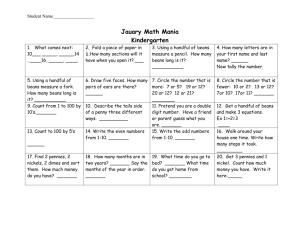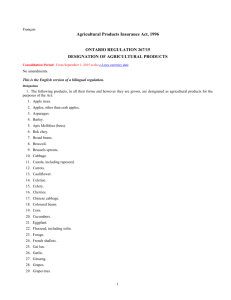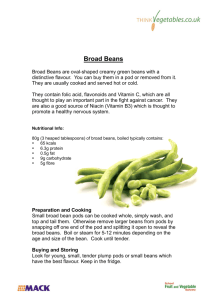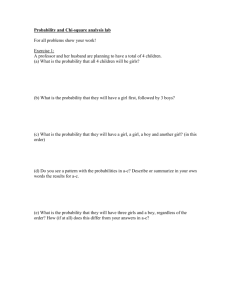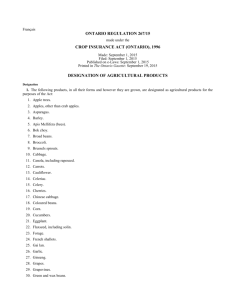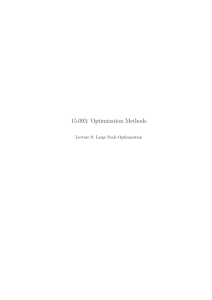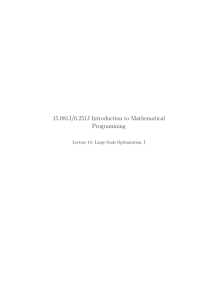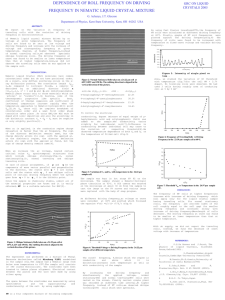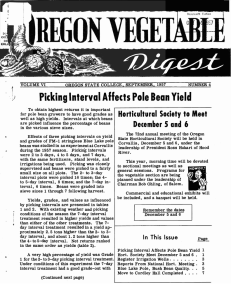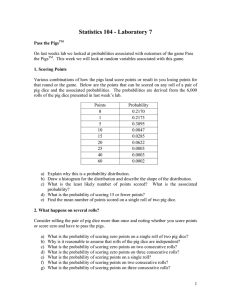10.1. We use the transformation r(x) = x/λ. Its inverse... f (x) is the density of X, then density of...
advertisement
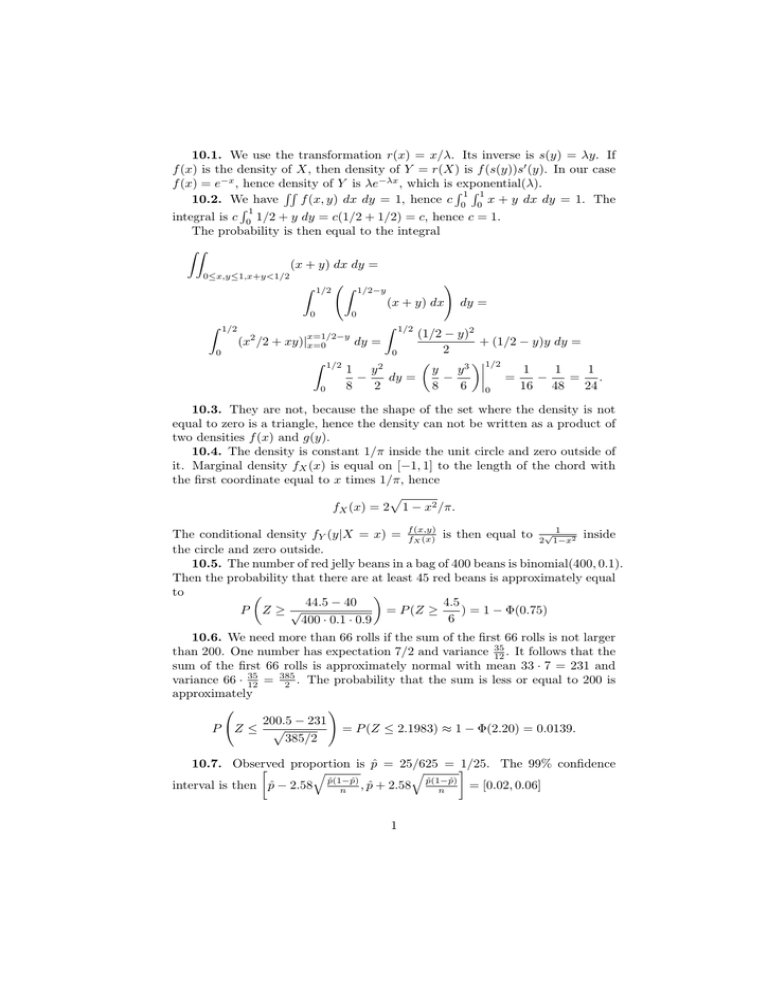
10.1. We use the transformation r(x) = x/λ. Its inverse is s(y) = λy. If f (x) is the density of X, then density of Y = r(X) is f (s(y))s0 (y). In our case f (x) = e−x , hence density of Y is λe−λx , which is exponential(λ). RR R1R1 10.2. We have f (x, y) dx dy = 1, hence c 0 0 x + y dx dy = 1. The R1 integral is c 0 1/2 + y dy = c(1/2 + 1/2) = c, hence c = 1. The probability is then equal to the integral ZZ (x + y) dx dy = 0≤x,y≤1,x+y<1/2 1/2 Z ! 1/2−y Z (x + y) dx Z 1/2 2 (x /2 + dy = 0 0 0 Z 0 1/2 1/2 (1/2 − y)2 + (1/2 − y)y dy = 2 0 1/2 1 y y 3 1 1 1 y2 = − dy = − − = . 8 2 8 6 0 16 48 24 x=1/2−y xy)|x=0 Z dy = 10.3. They are not, because the shape of the set where the density is not equal to zero is a triangle, hence the density can not be written as a product of two densities f (x) and g(y). 10.4. The density is constant 1/π inside the unit circle and zero outside of it. Marginal density fX (x) is equal on [−1, 1] to the length of the chord with the first coordinate equal to x times 1/π, hence p fX (x) = 2 1 − x2 /π. (x,y) √1 The conditional density fY (y|X = x) = ffX (x) is then equal to 2 1−x2 inside the circle and zero outside. 10.5. The number of red jelly beans in a bag of 400 beans is binomial(400, 0.1). Then the probability that there are at least 45 red beans is approximately equal to 44.5 − 40 4.5 √ ) = 1 − Φ(0.75) P Z≥ = P (Z ≥ 6 400 · 0.1 · 0.9 10.6. We need more than 66 rolls if the sum of the first 66 rolls is not larger than 200. One number has expectation 7/2 and variance 35 12 . It follows that the sum of the first 66 rolls is approximately normal with mean 33 · 7 = 231 and 35 variance 66 · 12 = 385 2 . The probability that the sum is less or equal to 200 is approximately ! 200.5 − 231 P Z≤ p = P (Z ≤ 2.1983) ≈ 1 − Φ(2.20) = 0.0139. 385/2 10.7. Observed proportion is p̂ = 25/625 = 1/25. The 99% confidence q q p̂(1−p̂) p̂) interval is then p̂ − 2.58 , p̂ + 2.58 p̂(1− = [0.02, 0.06] n n 1 in 10.8. The 99% confidence interval for proportion p in this case is included 1.29 1.29 , p̂ + √ p̂ − √ = [p̂ − 0.0258, p̂ + 0.0258]. 2, 500 2, 500 It follows that it is enough p̂ to be more than 0.528. 10.9. If probability of a rainy day is 1/3, then probability of having 12 or less raining days out of 60 is approximately ! 12.5 − 20 P Z≤p = P (Z ≤ −2.05) = 1 − Φ(2.05) = 0.0202. 60 · 1/3 · 2/3 Consequently, the evidence contradicts the assumption that the probability is 1/3. 2


